Jan Vertonghen, John Stones and Sergio Ramos are a joy to watch. They have incredible levels of technical ability, a superb passing range, and generally have the ingredients to play anywhere outfield, as shown by their usage in a variety positions by their respective clubs and national teams.
These players are centre-backs, and as such defending is their main duty. But what they have is a switch of creativity allowing their sides to build out from the back. This process allows the side in possession to soak up pressure from high-press sides, as well as draw out forwards in a low block side to create that much-needed space.
These players usually aren’t centre-backs at the start of their career. They’re often full-backs or midfielders, as evidenced by their attacking knowledge and intelligence on the ball. Managers such as Marcelo Bielsa, Mauricio Pochettino and Pep Guardiola are masters of this position change, as their styles of football benefit from it massively.
With a majority of amateur, semi-professional and professional sides playing out from the back, the ability to dribble and pass alongside basic defending duties is a must. In this episode of the How to scout series, we’ll dive into what these defenders (or playmakers) do, and how to scout a young ball-playing defender.
Breaking the first line of play
Lines of play is a simple yet complex theory in football. Simply put, a 4-4-2 system has 3 lines of play, a 4-2-3-1 has four lines of play. Each additional number in a formation signifies an additional line of play.
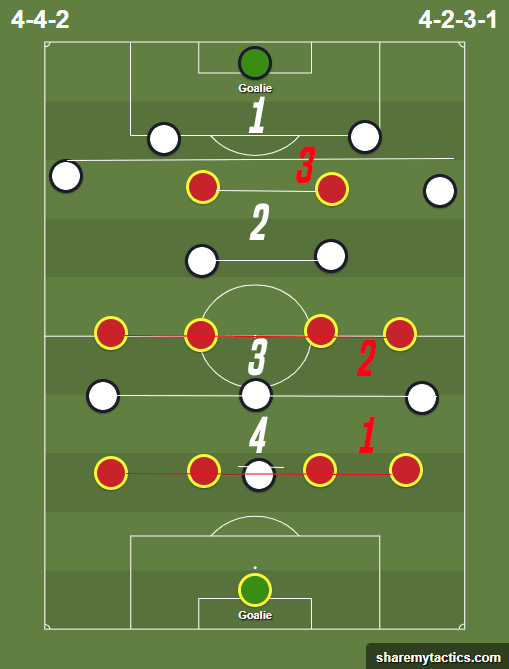
For a defender to break a line of play, it means he or she has dribbled or passed their way through the opposition’s lines of play. This disrupts the opposition’s shape as someone has to close down the defender on the ball. The skill to do so is something ball-playing defenders excel at. They are capable of drawing in opposition players to then beat them by passing or dribbling around them, offering their team a numerical advantage in the build-up play.
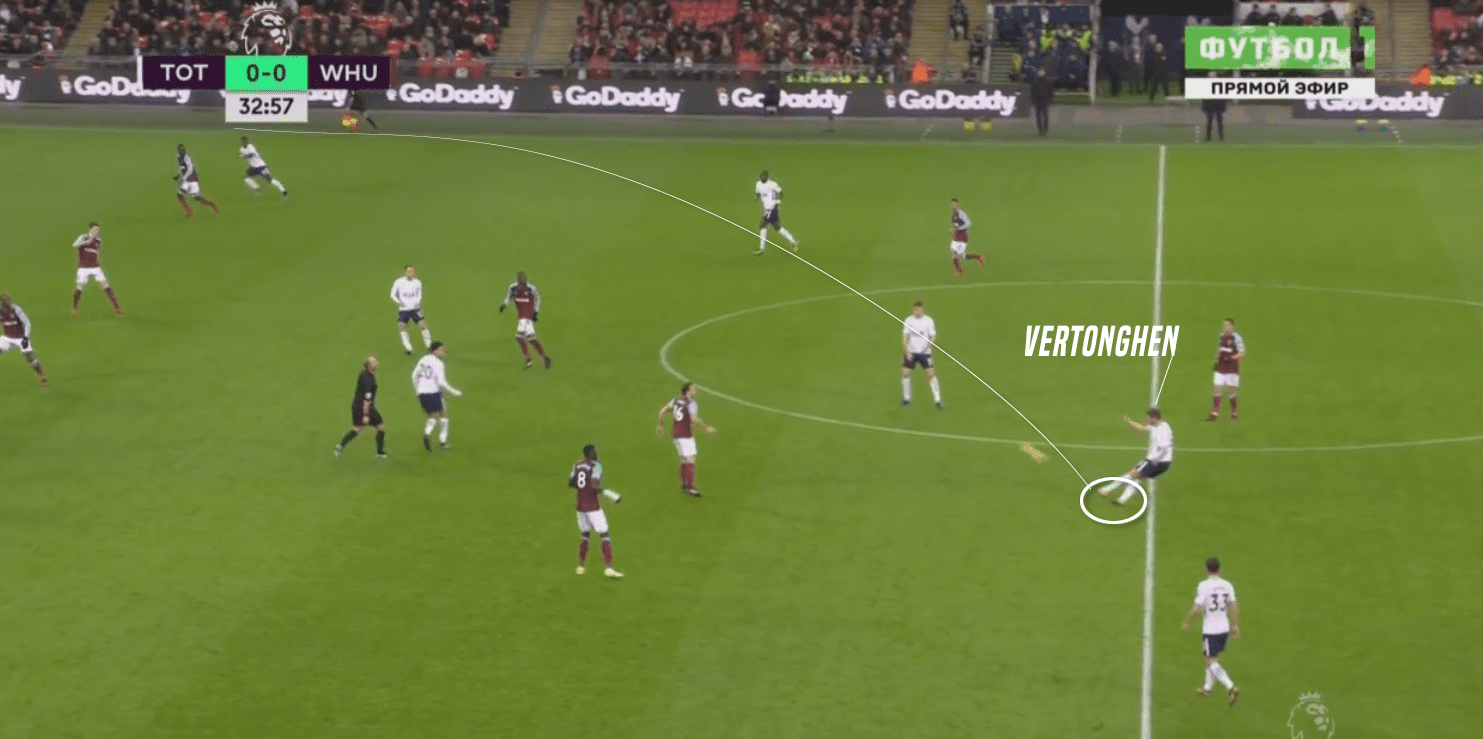
In the image above, we can see how West Ham have pressed Spurs well, blocking off any passing lanes. Vertonghen took the task of dribbling the ball past West Ham’s first line of play, he then fires a fantastic diagonal ball to the marauding Serge Aurier. This ability is absolutely vital to the ball-playing defender as they are essentially the first playmaker in the side, depending on how comfortable with the ball their goalkeeper is.
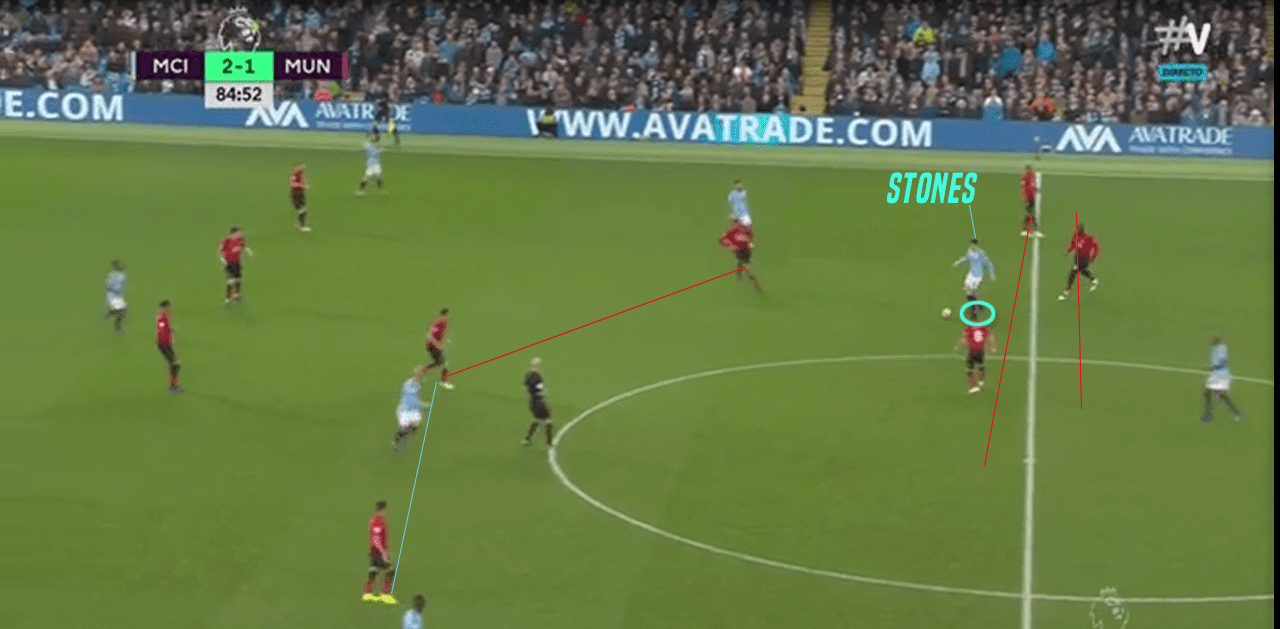
John Stones is a master of breaking defensive lines. Above we see his strongest quality: his ability dribble past the opposition’s line of play. As Stones has broken past two lines already, City have a numerical advantage over their Manchester neighbours, allowing them to make possessional play easier.
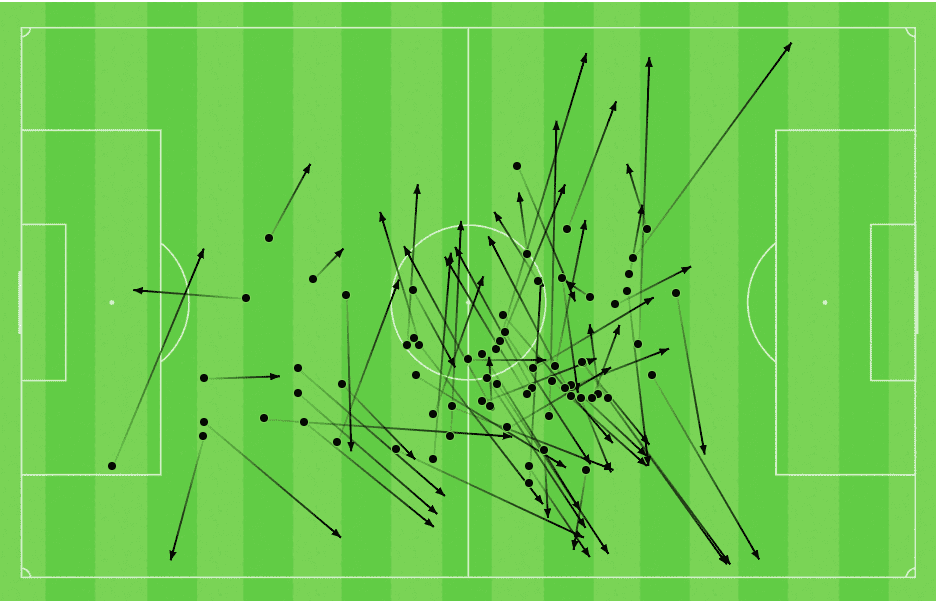
In the above image, we see the direction and position of each of John Stones’ 72 attempted passes, of which 70 were successful, giving an incredible passing success ratio of 97%. Just as impressive the Englishman’s passing ratio are the locations from which he attempts the majority of his passes.
An abundance of these attempts are either near the halfway line or further ahead of the halfway line, indicating how important ball-playing defenders are in possession. Ball-playing defenders must have confidence, composure and a high level of attacking knowledge, usually gained by player different positions across the pitch.
An unnatural centre-back
A young slick-haired Sergio Ramos was a right-back, Jan Vertonghen and Toby Alderweireld were both central midfielders, John Stones was even once a right-winger and starlet Juan Foyth was recently a creative midfielder.
Until recently, ball-playing defenders were created by their manager moving them from a more progressive position into their now famous position. Full-backs and midfielders who are tall and possess impressive passing ability as well a powerful defensive mindset are perfect for this role. Luckily enough for the next generation of stars, academies promote all players to express themselves on the ball, from goalkeeper to striker.
An interesting anecdote to reassess is the young Argentinian Spur Juan Foyth. The youngster was playing as a regista up until the last few seasons, but it is absolutely evident that the majority of his footballing education was focused around playmaking from deep. The starlet has an outstanding dribble success percentage of 94%, with just under three completed dribbles per game on average. Recently he has completed as many as five dribbles per game, an outstanding figure for a player of just 21 years of age.
Mentality in quotes
Psychology should be one of, if not your main priority when scouting a younger player. A ball-playing defender must have incredible levels of composure and self-belief, as well as impressive attacking & defensive intelligence. This is often found in defensive midfielders and full-backs, hence why most of today’s top players in this mould started their careers in these positions. That’s why you should keep an open eye on players in these positions too.
Legendary Manchester United & England defender Rio Ferdinand passionately had this to say about City player John Stones in 2016:
“At international level – look at the last two tournaments – we haven’t had a player who can bring the ball out of defence, who can put his foot on the ball and go, ‘Right, let me control it a little bit or step into midfield.’”
Let’s ignore Rio talking about his ability on the ball, but pay attention to Rio’s input on Stones’ mentality. He notes that John has confidence in his ability, as well as the composure to bring the ball into midfield and dictate possession. The player can have the ability, but if he doesn’t have the belief to do what he’s capable of, it will affect his game defensively, and massively halt his ability to be a natural ball-playing defender.
Barcelona defender Gerard Pique had this to say about his time as a youngster at Manchester United:
“I learned so much during my time at United. Sharing a dressing room with Paul Scholes, Cristiano Ronaldo, Wayne Rooney, Ruud van Nistelrooy, and Ryan Giggs at such a young age was an amazing experience. I didn’t play as much as I would have liked, but it was a master’s degree in development both as a player and a person.”
Spotting the next star
We’re going to focus on Juan Foyth as I believe he is the most creative young defender on the planet. Below is a data visualisation piece illustrating his strengths and weaknesses.
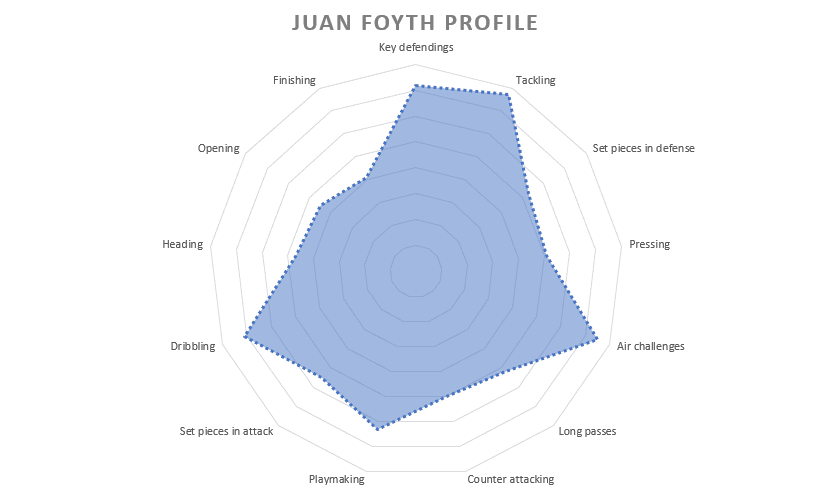
As we can see from the above graph, Juan Foyth’s strengths as a player consist of his aerial ability, dribbling, playmaking and tackling ability – the complete ingredient list for the modern playmaking defender.
His dribbling is exceptional, and as mentioned earlier in the article, he boasts an incredible 94% dribble success ratio.
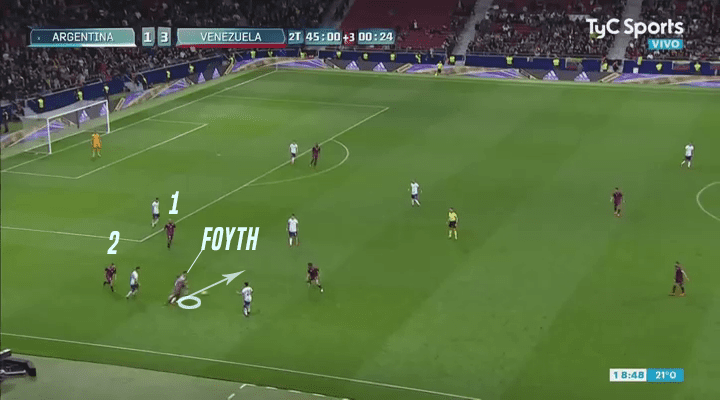
After dispossessing player #1, Foyth skips past player #2 to then win a foul after he skips past the man challenging him in the image above. Such dribbling ability is often found in midfield behemoths such as ex-Spurs man Moussa Dembele, or mercurial wingers like Neymar. The fact that a 21-year-old centre-back has such a level of dribbling is incredible. Arguably, he is the only player of his age in the world in his position to have this ability.
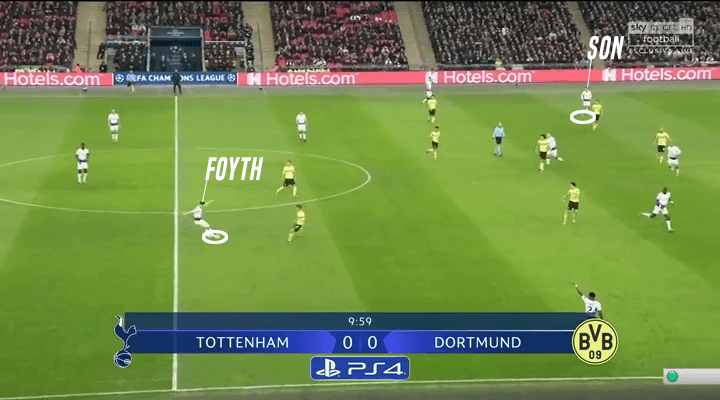
Above we see Foyth further ahead of the rest of Tottenham’s back three as he has dribbled towards the Dortmund forwards, baiting them to press him. He could have chosen the easy option of passing to Aurier, but he sees Heung-min Son in a yard of space and he also understands that he is accompanied by Vertonghen. This combination of the left wing-back and left winger was a catalyst in Spurs’ success. Foyth’s ability to find them from distance allowed Tottenham to absorb and disperse Borussia Dortmund‘s press.
While passing is a strength of Foyth’s, he still has some room to improve in terms of consistency. However, he’s come on in leaps and bounds whilst playing alongside some of the best playmaking defenders in Vertonghen and Toby Alderweireld. As he was a regista for the majority of his footballing life, his long and short distance passing is incredibly impressive with a pass success rate of 88%.
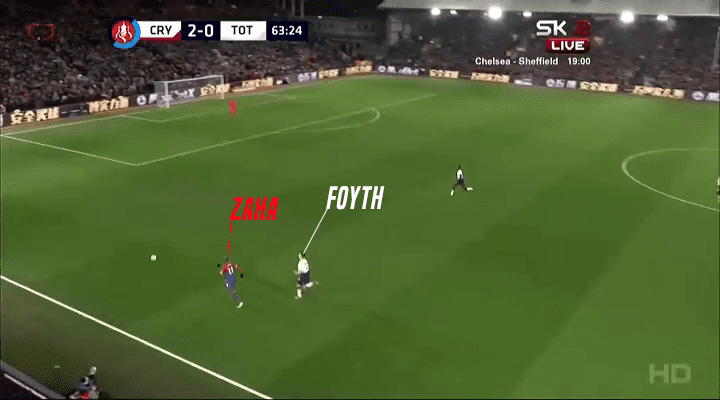
Recovery defending is an important aspect to modern defending as sides enjoy playing with a high-line in a bid to press successfully. Crystal Palace are a side that love to counter this tactic by absorbing pressure to then counter-attack at a deadly speed.
As a result of Palace’s footballing mentality, and intelligent play by Zaha, Foyth now sees himself in a 45-yard foot race with the pacey winger. From the image above, we can note that Foyth has a good maximum velocity sprinting technique. He manages to stay within a yard or two to Zaha, allowing him to hold him up and force the Ivorian into a 2v1 scenario in partnership with his defensive partner Davinson Sanchez.
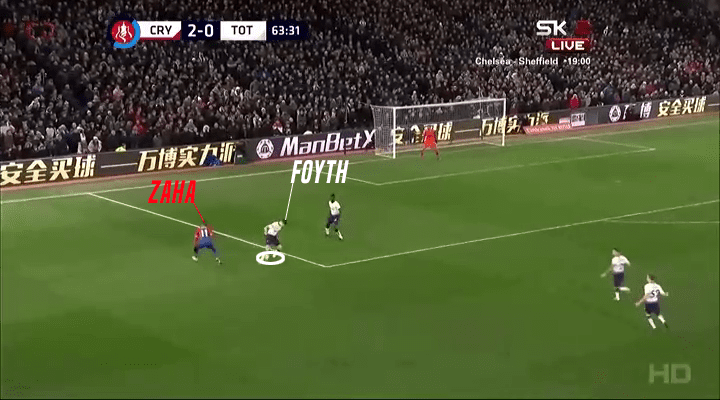
With help from Davinson Sanchez, Foyth had the intelligence to show Zaha inside as Spurs had the numerical advantage. After standing Zaha up, he remained patient as he knew that the winger likes to enjoy his time on the ball. This also allowed the rest of Tottenham’s cavalry to track back. This recovery from Foyth indicates that he is a good defender and has pace in his locker.
A criticism of Foyth’s game is that his defensive side is sometimes poor. He is often a weaker link against physical sides such as Burnley. But at 21 years of age, Foyth has time to nail his defensive consistency. If he does this, he’ll be one of the best defenders in the world.
His physical build is also a weakness. At 1.82m tall and 68 kilograms, Foyth is of a rather slender frame for a defender. Build is temporary, and if the Argentine develops muscle over the next few seasons, he could improve physically as well as perfect his already strong aerial ability.
The above images and analysis show the traits that separate this elite strain of players from the rest. Players like Juan Foyth, Filippo Romagna and Benjamin Pavard are the most exciting players of this player type around the world.
Conclusion
Ball-playing defenders are the result of modern sides looking to dominate possession, absorb the press and keep the opposition away from their goal. They’re a vital cog to the build-up phase and they offer positional diversity. Jan Vertonghen has often played at left-back and left wing-back for example, while Toby Alderweireld has filled in at defensive midfield and right-back for the Belgian national team.
The modern centre-back is often the most complete player on the pitch, both physically, psychologically and technically. They are gifted in possession, with superb levels of passing and they’re often adept dribblers.
With academies and non-league sides seeing the benefit of 11 players playing football, we can be sure to see some outstanding playmaking defenders in the future – something everyone should be excited by.
To suggest the next topic of the “How to Scout” series, message or tweet me @Xanoriah.
Thanks for reading – until next time.
If you love tactical analysis, then you’ll love the digital magazines from totalfootballanalysis.com – a guaranteed 100+ pages of pure tactical analysis covering topics from the Premier League, Serie A, La Liga, Bundesliga and many, many more. Buy your copy of the March issue for just ₤4.99 here, or even better sign up for a ₤50 annual membership (12 monthly issues plus the annual review) right here.

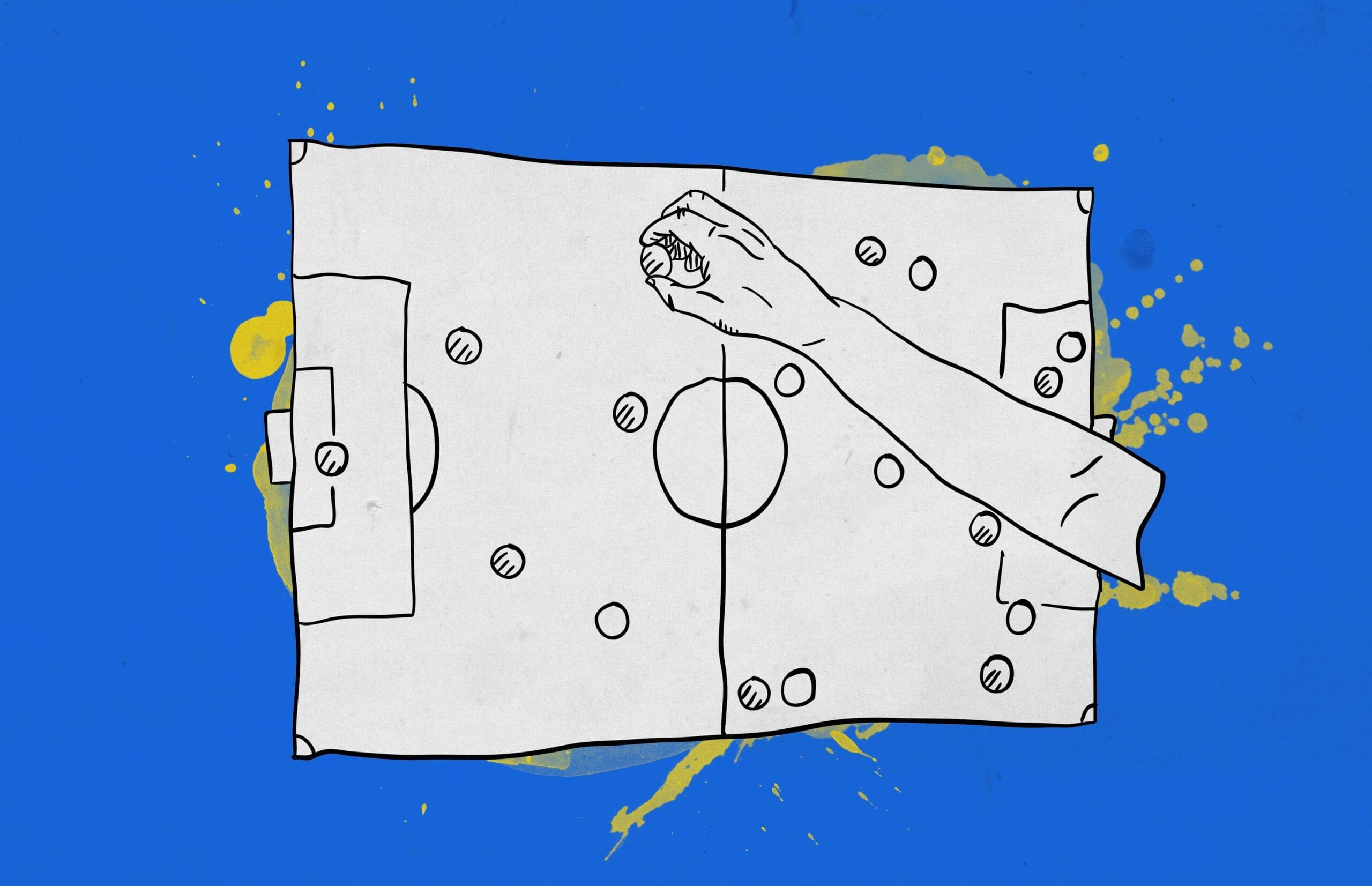



Comments